This document summarizes female reproductive toxicity studies and outlines three segments of testing: Segment I covers premating, mating, early pregnancy and implantation; Segment II covers pregnancy from implantation through organogenesis; Segment III covers late pregnancy, postnatal development, and evaluation of effects on the first generation offspring. Key aspects of each segment are described, including study design, observations, endpoints, and the stages of the estrous cycle and reproductive cycle that are evaluated.
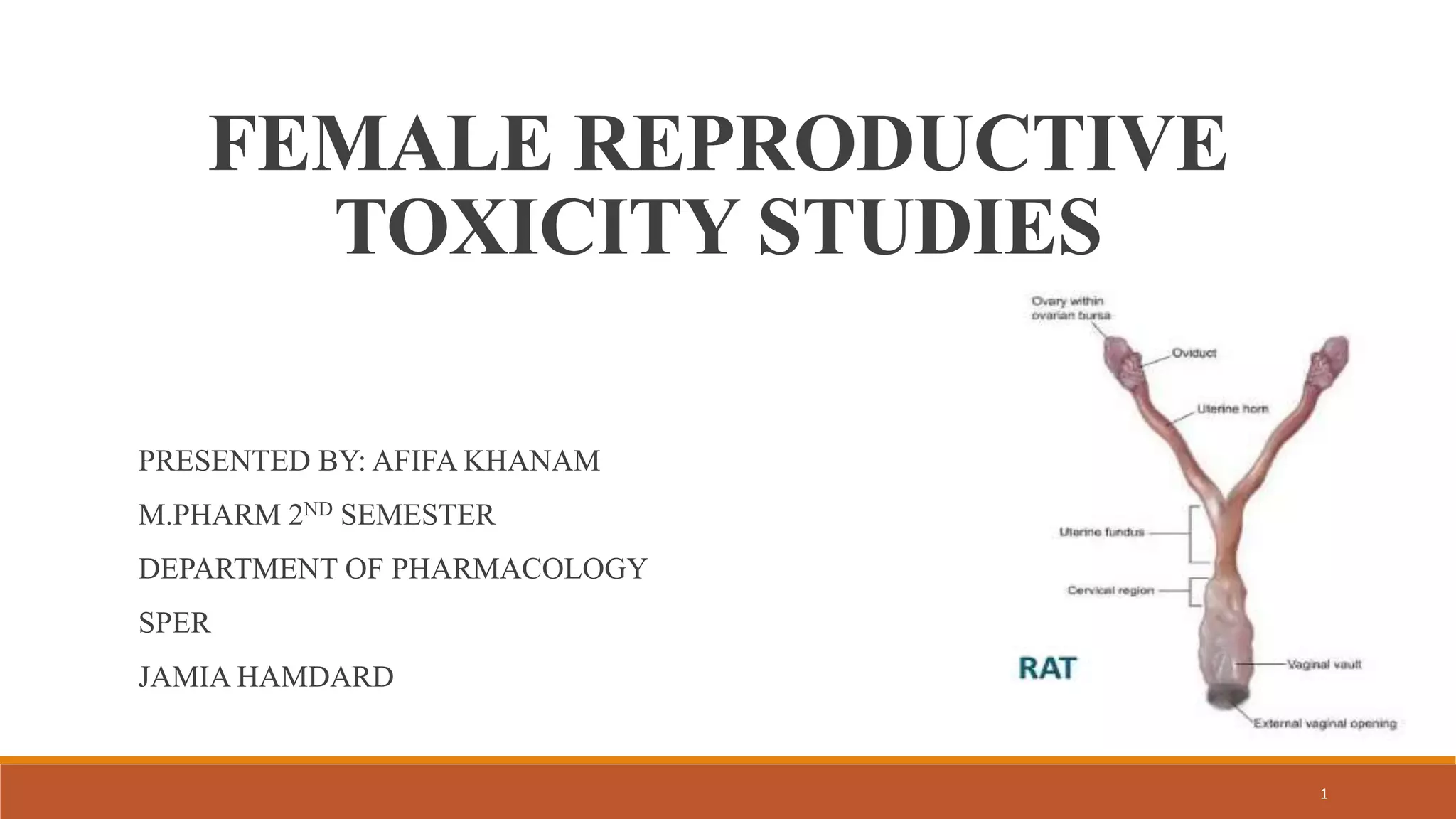

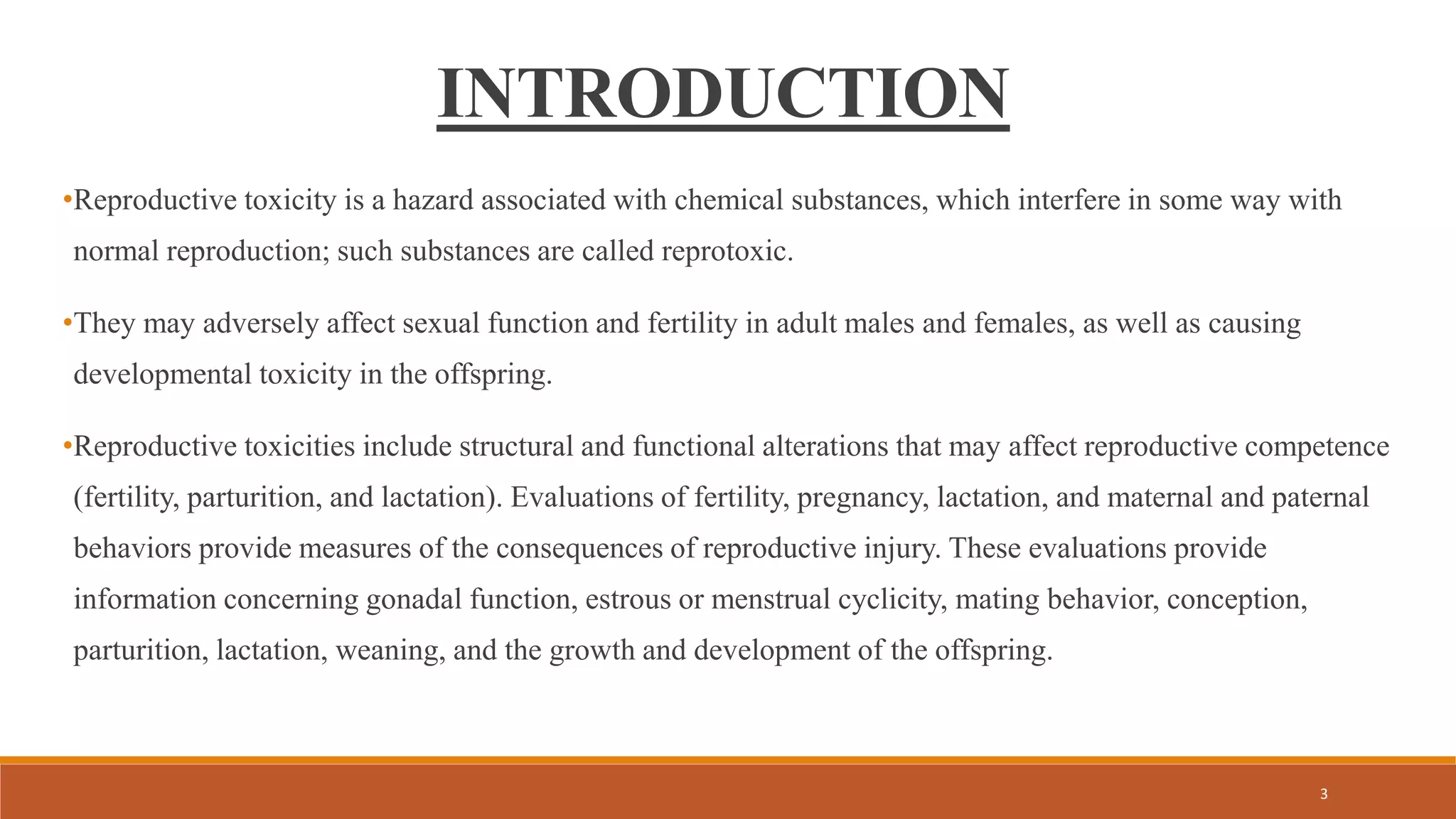
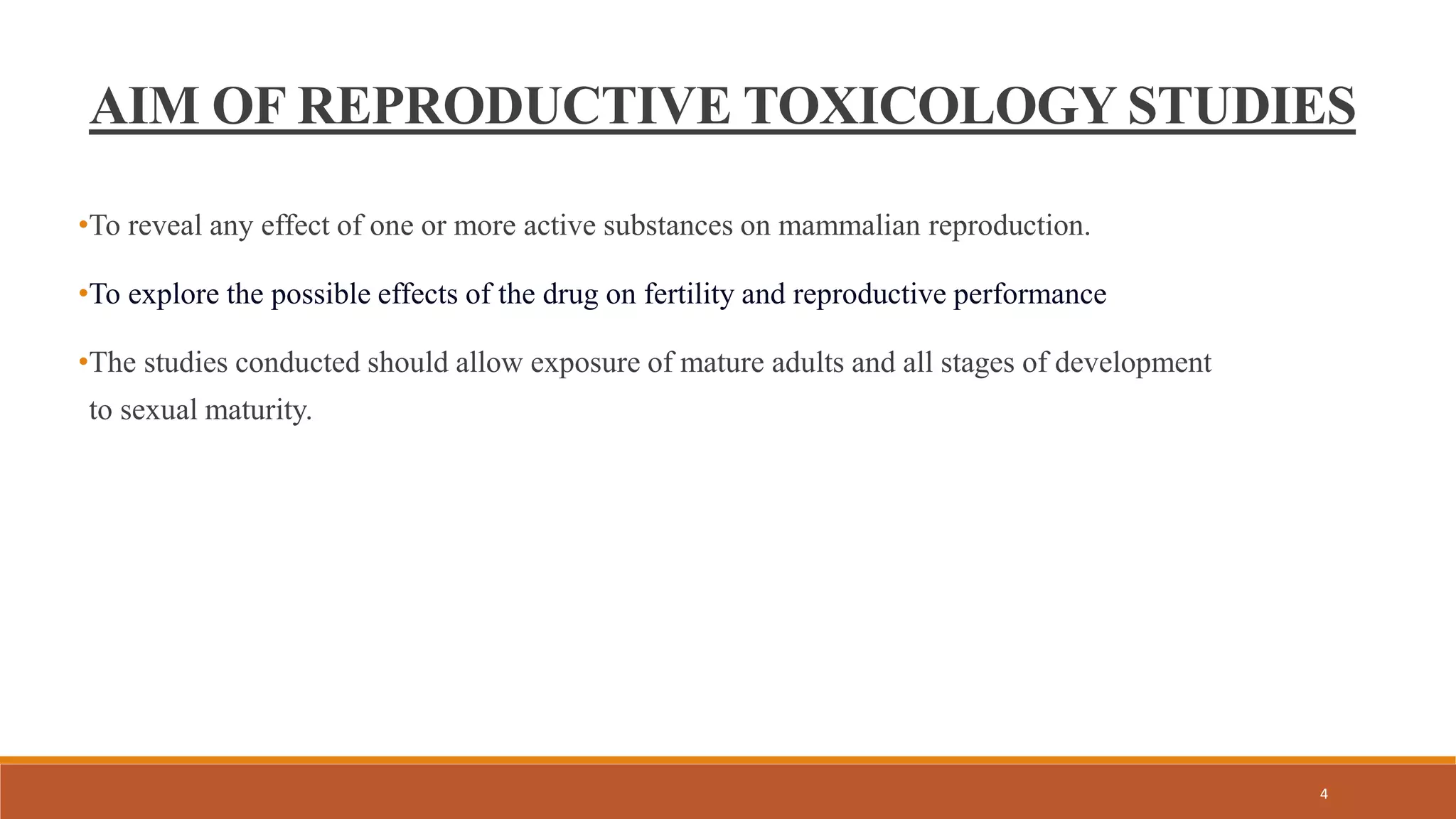

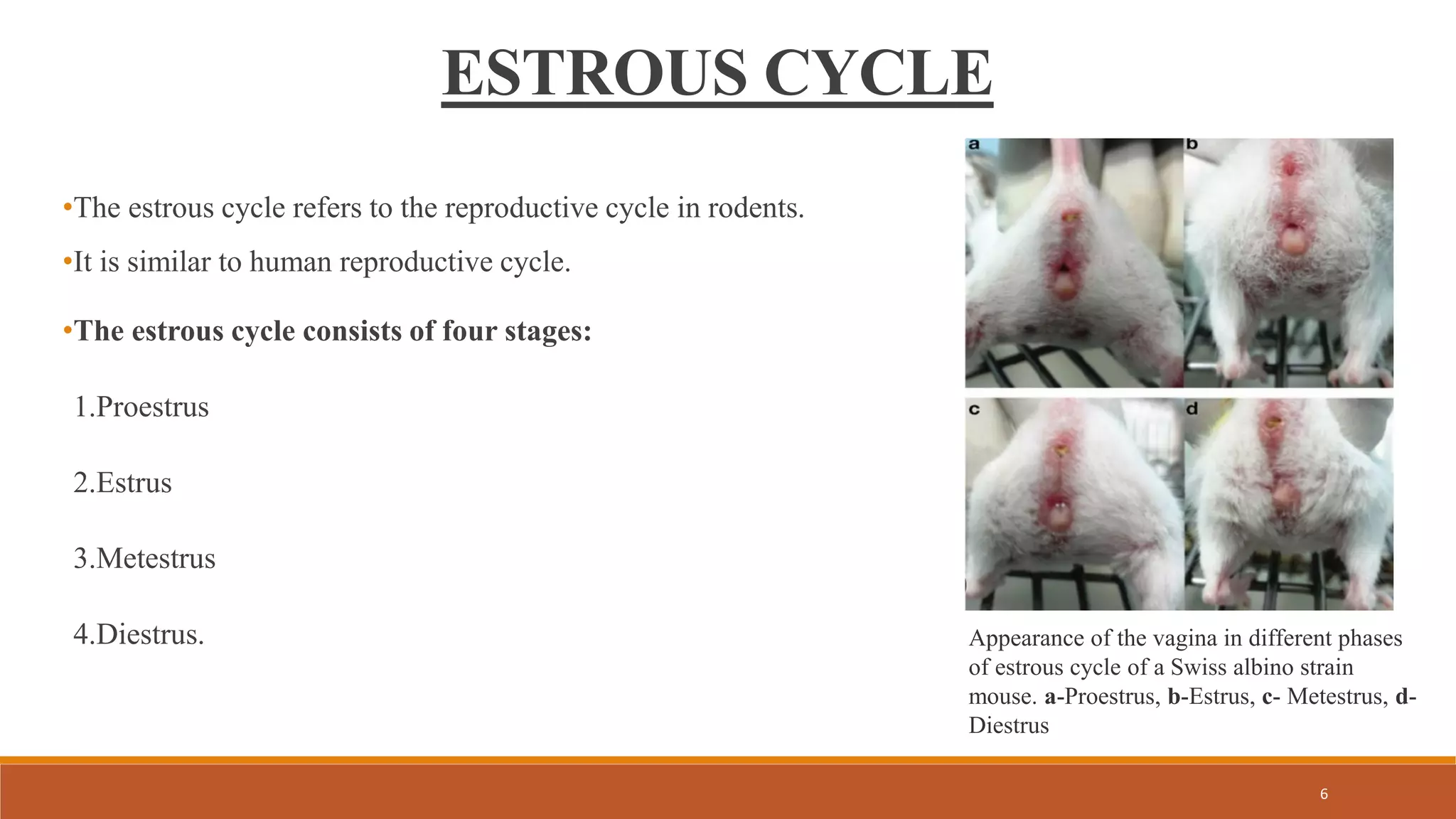

![FEMALE FERTILITY TEST
1. The fertility and reproductive toxicity study: Segment I
◦ covers the period of premating, cohabitation and mating, and early
pregnancy through implantation (Gestation Day [GD] 6 in the rat)
2. The prenatal developmental toxicity study: Segment II
◦ covers pregnancy from implantation through major organogenesis (closure
of the hard palate; GD 15 in the rat) up to the day before delivery (GD
20/21)
3. The prenatal and postnatal study: Segment III
◦ covers late pregnancy and postnatal development (usually until weaning at
Postnatal Day [PND] 21)
8](https://image.slidesharecdn.com/femalereproductivetoxicitystudies-230521102112-6652da81/75/Female-reproductive-toxicity-studies-pptx-8-2048.jpg)
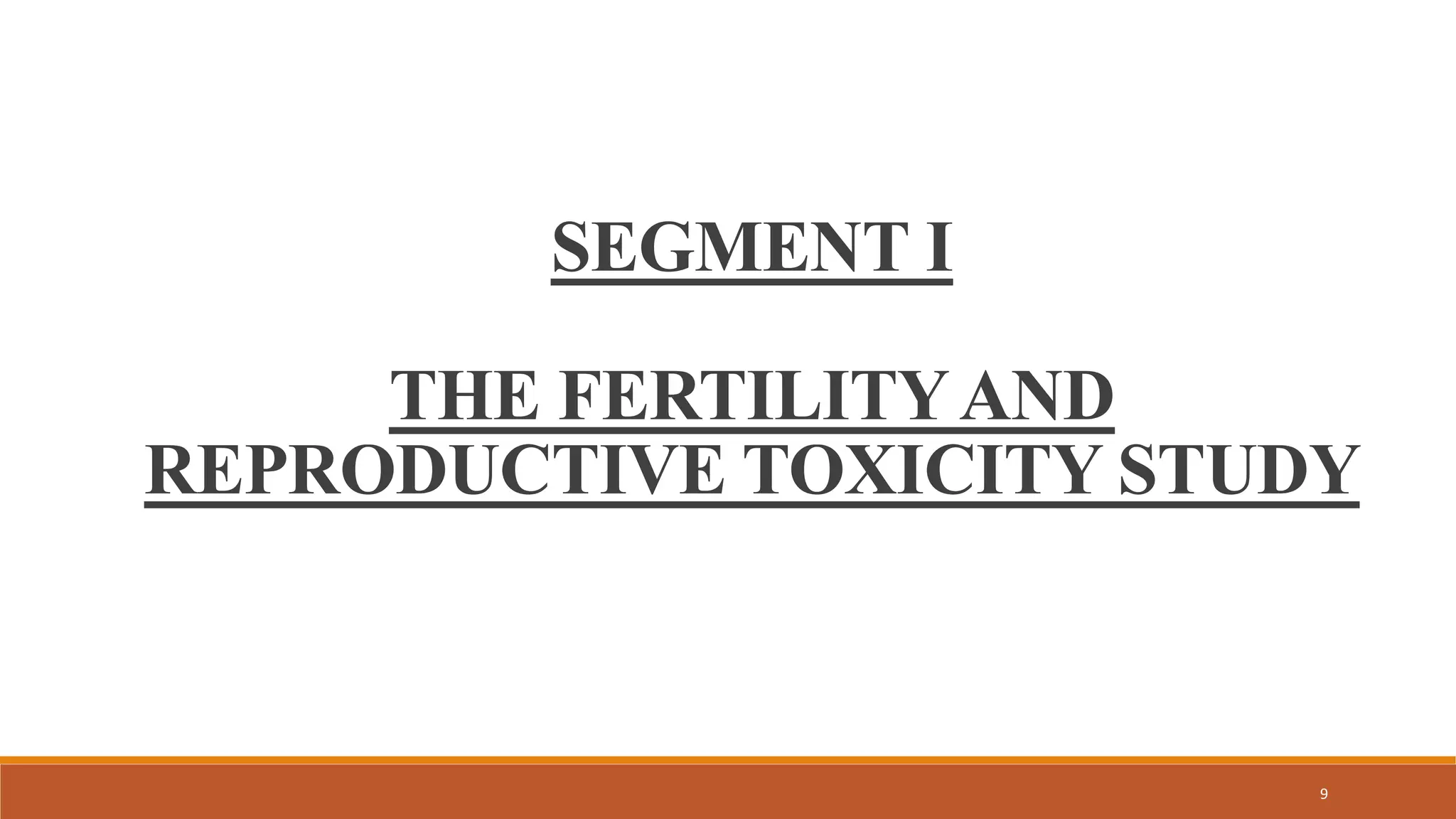












![22
PURPOSE
• Segment III study gives information about the health hazards likely to arise in various life stages
following the exposure to the test item prior to conceptus [in parent males and females], during in-
utero development of embryo/ foetus, preweaning (lactation) (in pregnant and dams), adolescence
and adulthood (first generation offspring (F1)).
• The effects of the test item in terms of F1 generation reproductive functions, development of
nervous and immune systems is investigated to establish the NOAEL, LOAEL and benchmark
dose](https://image.slidesharecdn.com/femalereproductivetoxicitystudies-230521102112-6652da81/75/Female-reproductive-toxicity-studies-pptx-22-2048.jpg)


